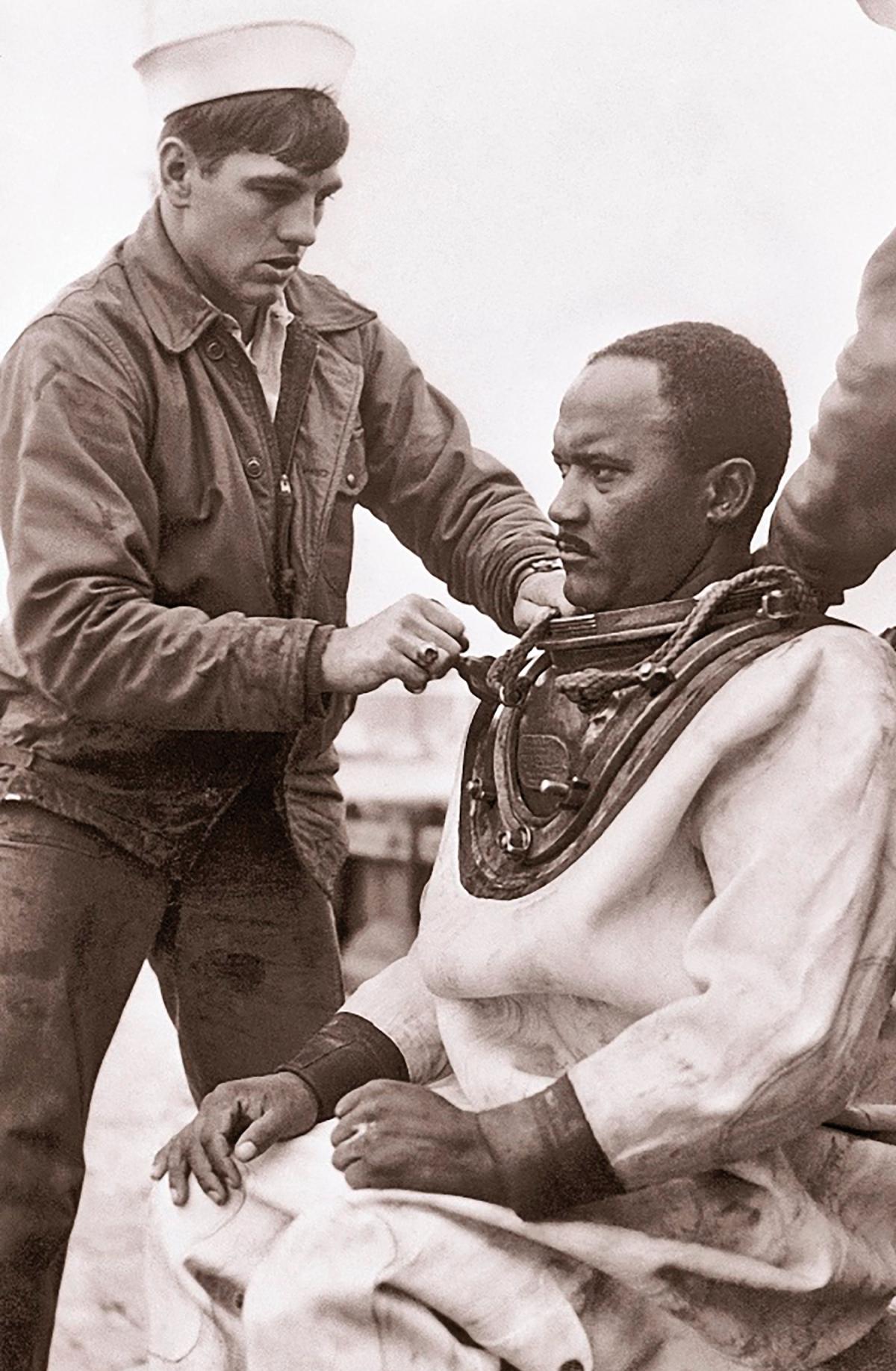Master Chief Boatswain’s Mate Carl M. Brashear was raised on a sharecropping farm in Kentucky, enlisted in the Navy in 1948, and pushed past racism and discrimination to become the U.S. Navy’s first African-American diver and then master diver.
His career was shaped by skill, determination, and courage. After losing a leg to a violent shipboard accident in 1966, he drove himself in recovery to train and then, in essence, demand that the Navy recertify him for full duty as a diver.
The 2000 motion picture Men of Honor captured his inspirational story and achievements. In these edited excerpts from his Naval Institute oral history, done by Paul Stillwell, he recalls the accident and the subsequent showdown with Navy doctors that led to his recertification.
In 1966, the Air Force lost a nuclear bomb off the coast of Palomares, Spain. The plane refueling the B-52 gained too fast and they collided in midair. Three of the bombs’ parachutes opened, and those bombs landed in Spain. One chute didn’t open, and that bomb fell in the water. I was on board the salvage ship USS Hoist (ARS-40) in the Navy’s recovery operation.
We dove around the clock for two months. The fisherman who saw the bomb go into the water kept saying, “You’re too close, too close. Out there! Out there!” Our people made a replica of the bomb and dropped it to see how it would show up underwater on the screen. We went out six miles, and on the first pass, there the bomb was in 2,600 feet of water.
I rigged up what I called a spider, a three-legged contraption for the bomb to be hooked up to. The Controlled Underwater Recovery Vehicle (CURV) out of Woods Hole was going to do that job. We brought it up to a certain depth, then to the surface, had it in an LCM-8 landing craft, and brought the Mike-8 alongside to hoist the crate on deck.
I got the crate and was picking it up when the boat broke loose. The boat’s engineer was revving the engines and parted the line. I was trying to get my sailors out of the way. The boat pulled on its mooring-line pipe. That pipe came loose, flew across the deck, and struck my leg below the knee. They say I was way up in the air just turning flips, then landed about two feet inside the freeboard. I jumped up, started to run, and fell over. That’s when I knew how bad
my leg was.
Months later, 1967, they were getting tired of me at the naval hospital. Between the hospital and the naval station, while on medical hold, I endorsed my own orders and reported to second-class diving school. I was diving, having photos taken. Then it came time for me to report to the Bureau of Medicine and Surgery physical evaluation board.
Brashear was called to Washington, D.C., and spent a week at the deep-sea diving school diving with a captain and a commander.
Quite a few people from BuMed came over and watched me dive for a week as an amputee and run around the building, do physical fitness every morning, lead the calisthenics.
Captain Jacks was policy control. He said, “Most people in your position want to get a medical disability, get out, and draw as much pay as they can. You’re asking for full duty. Suppose you would be diving and tear your leg off?”
I said, “Well, captain, it wouldn’t bleed.”
He said, “Get out,” ran me off.
Finally, they called me back in. I reported to diving school under Chief Warrant Officer Raymond Duell, who was efficient, conscientious, dedicated, a perfectionist. They wanted him to evaluate me for a year and report back to BuMed. That man dove me every day, every cotton-picking day. I did it every day, weekends and all. At the end of that year he wrote the most beautiful letter. Boy, that was something. I was returned to full duty and full diving—the first time in naval history for an amputee.




